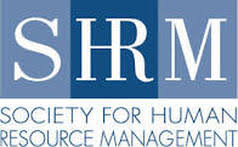 Wage and Hour Class Actions Can Cost Employers Millions
Wage and Hour Class Actions Can Cost Employers Millions
Top 10 employment-related lawsuits in 2017 had a combined value of $2.72 billion
Lisa Nagele-Piazza, SHRM-SCP, J.D.; SHRM
Feb 5, 2018

Employers that fail to comply with federal and state wage and hour laws could face class-action lawsuits that lead to expensive settlements with workers.
“Wage and hour disputes seem to lead the pack relative to employment class-action litigation,” said Charles Krugel, an attorney in Chicago. “These types of lawsuits are cash cows for plaintiffs’ attorneys because attorney fees are relatively easier to obtain than in other forms of commercial litigation and because liquidated damages may be included.”
Even if the employer’s mistakes are minor, the business may still be liable for such fees and damages, he noted. These cases tend to settle quickly because lengthy litigation can result in higher fees.
The dollar value of workplace class-action settlements skyrocketed in 2017, according to the annual Workplace Class Action Litigation Report by law firm Seyfarth Shaw. The top 10 employment-related settlements in 2017 totaled $2.72 billion—up from $1.75 billion in 2016, the report showed. Workplace discrimination, employee benefits and wage and hour claims were among the top actions.
The growth in wage and hour settlements—which rose the past two years to a combined value of $1.2 billion—is the No. 1 exposure for corporations heading into 2018, said the report’s author, Gerald Maatman Jr., an attorney with Seyfarth Shaw in Chicago and New York City. He noted that HR professionals and business executives should focus their efforts on prevention.
“A dollar spent on risk management and compliance is better than a dollar spent on settling a class-action lawsuit,” Maatman said. “These statistics bring to life the conversation that must happen in the C-suite about why businesses need to spend money on compliance.”
Here are some common wage and hour mistakes attorneys said HR professionals should try to avoid in their workplaces.
Exemption Classification Errors
Classification issues are a problem for employers that face the complexities of the Fair Labor Standards Act (FLSA), said Daniel Schlein, an attorney in New York City. He said one recurrent issue is that employers improperly classify workers as exempt and fail to pay them overtime wages.
[SHRM members-only toolkit: Determining Overtime Eligibility in the United States]
Under the FLSA, the most common exemptions from overtime pay fall under the so-called white-collar exemptions for executive, administrative and professional employees. To qualify for one of these exemptions, workers must be paid on a salary basis, earn a minimum salary of $23,660 and regularly perform certain duties. For example, an exempted executive must regularly supervise two or more employees, among other things.
There are other exemption categories employers should note, including categories for certain computer-related positions and commissioned sales roles.
Nonexempt employees who don’t qualify for an exemption must be paid 1.5 times their regular pay rate for all hours worked beyond 40 in a workweek.
Misclassifying Gig Workers
“Another major issue is the misclassification of workers as independent contractors or interns,” Schlein said. In the gig economy, employers are increasingly relying on independent contractors and freelancers to reduce their payroll costs and tax liabilities, he noted.
Gig workers and other independent contractors generally have more autonomy than employees regarding when, where and how much they work. If properly classified, gig workers aren’t entitled to certain employment benefits like FLSA minimum wages and overtime pay. Thus, if employees are misclassified as independent contractors, they may be entitled to such benefits.
The Wage and Hour Division of the U.S. Department of Labor continues to receive many complaints from workers over misclassification issues, and the division has brought successful enforcement actions against employers that misclassify their workers. “Plaintiffs’ attorneys are well-aware that the difficulty of complying with the FLSA renders the statute a promising area for collective actions,” Schlein added.
State-Law Violations
Besides exposure under the FLSA, one trend employers should watch for involves “hybrid” wage and hour actions, Schlein said. A hybrid action is one in which plaintiffs bring claims under both the FLSA and the corresponding state law.
State wage and hour laws can offer more opportunities for overtime claims than the FLSA, often provide more time to file a claim and can provide broader coverage, he noted.
For example, the California Labor Code has strict rules for what must be listed on pay stubs, and employers can face steep fines for noncompliance.
The Golden State also has a higher minimum wage and exempt salary threshold, as well as a more stringent duties test for white-collar exemptions.
Connecticut, New York, Massachusetts and other states also tend to have more employee-friendly laws that businesses should understand.
HR’s Role
Schlein said employers can decrease the chances of a collective action under the FLSA or state wage and hour laws by:
- Maintaining accurate time-keeping and record-keeping practices through up-to-date systems.
- Training managers on the differences between exempt and nonexempt employees and encouraging managers to report wage issues early.
- Conducting periodic wage and hour audits to ensure employees have been correctly classified as exempt or nonexempt.
- Assessing the type of work independent contractors are doing and how they are doing it.
Employers should maintain open lines of communication with employees when questions or disputes arise, Krugel said.
“Most lawsuits arise because the employer has records that are difficult to understand or doesn’t properly communicate with employees,” he added. “If an employer doesn’t engage in good record-keeping, class-action wage and hour lawsuits become easy money for plaintiffs’ side attorneys.”
Workplace class actions should never come as a surprise, Maatman said. Businesses can reduce litigation risks by having solid HR practices in place and ensuring that employees feel that the doors to the HR office are open and that their grievances will be heard, investigated and remedied if needed.
We recently asked lawyers about the most challenging aspects of running a law firm. We received lots of responses—so many, in fact, that we decided to run a second article on the subject. Here’s what lawyers had to say:
“Running a criminal defense firm is an enormous amount of responsibility. I am responsible for making sure that the work gets done, the potential clients get retained, the bills get paid, the briefs get filed, the cases get argued, and the clients get out of jail. I work for myself, so there is no one else to blame. If there is a problem, I have to solve it. It’s a tremendous challenge, but it’s also incredibly rewarding.” — Zak Goldstein, a criminal defense lawyer in Philadelphia
“Staying on mission and keeping employees happy and productive. We work very hard, and we’d love to take on every worthy client, but to deliver good results and keep thriving, we can’t spread ourselves too thin. That’s no good for clients or for employees. We have a very rigorous evaluation process that helps us to focus on the right cases, in the right volume.” —David L. Scher, an employment discrimination attorney in Washington D.C.
“The most challenging aspect of running a firm for me is keeping track of everything. It’s not just my clients and my cases that I have to work on, but the business aspect as well. I have to keep track of the bills, which marketing campaigns are working, returning calls, and planning ahead so my calendar is not too crowded. I love working with my clients and going to court to help them, but I am still getting used to actually running a business.” —Amanda Waechter PC, a criminal defense attorney in Plainfield, IL
“The travel can sometimes be the most grueling part. Because we are positioned in a smaller region, many expert witnesses are located up in San Francisco Bay Area or down in the Los Angeles region. We’ve been able to take a number of depositions over video conference, which has eased off the 8-10 hour drives. And having client files securely accessible from anywhere keeps us locked in at all times.” —Brian O’Neill, a personal injury lawyer in San Luis Obispo, California
“Balancing business development with the actual practice of law. The two are distinct concepts. A lawyer needs to play to his or her strengths. If a lawyer’s strength is business development, then he or she probably needs a partner or associate who’s good at the practice of law. And vice versa for a lawyer who’s a great practitioner but isn’t a rainmaker.” —Charles A. Krugel, who practices labor and employment law and is a human resources attorney in Chicago
“The most challenging part of running our firm> is making sure that we have the right team in place. We take hiring new attorneys very seriously because it’s vital to service our clients with the best talent possible and ensure everyone is working toward the same goal.” — Julie Sellers, managing partner at a commercial real estate legal practice in Atlanta
“The most challenging aspect is the business side. If you’re in charge of a law firm, you must understand you are running a business. My greatest failures and successes so far are directly related to business decisions I’ve made.”—Evan Walker, a personal injury lawyer in San Diego
“Finding excellent employees to help you serve your clients is always the largest challenge facing a law firm” — George Lorenzo, a personal injury attorney in Tampa, Florida


Leave A Comment